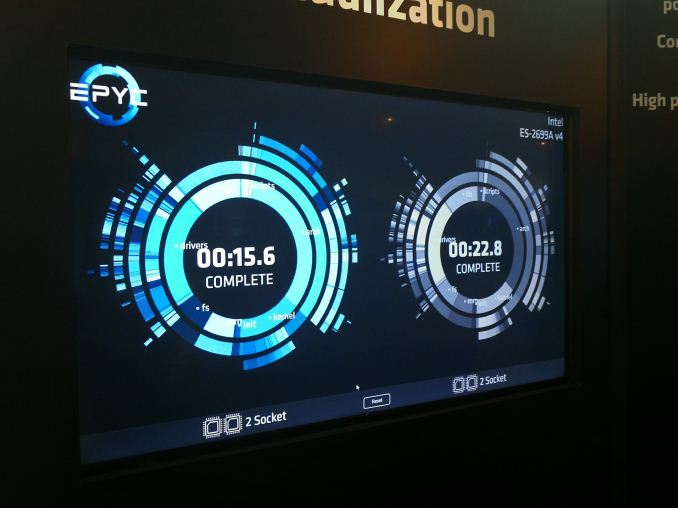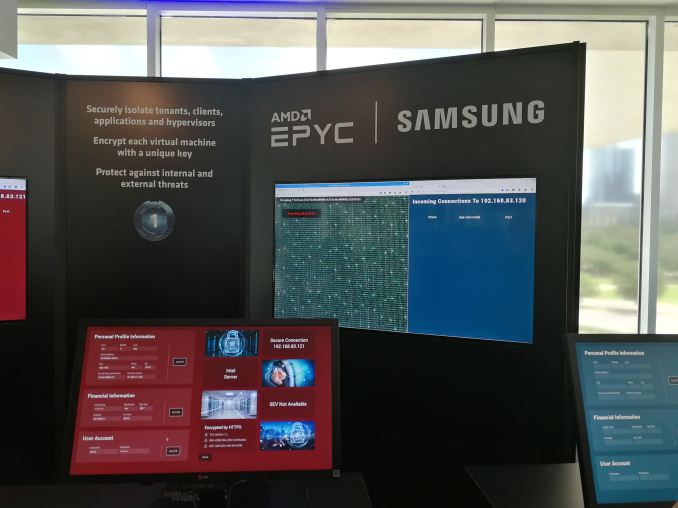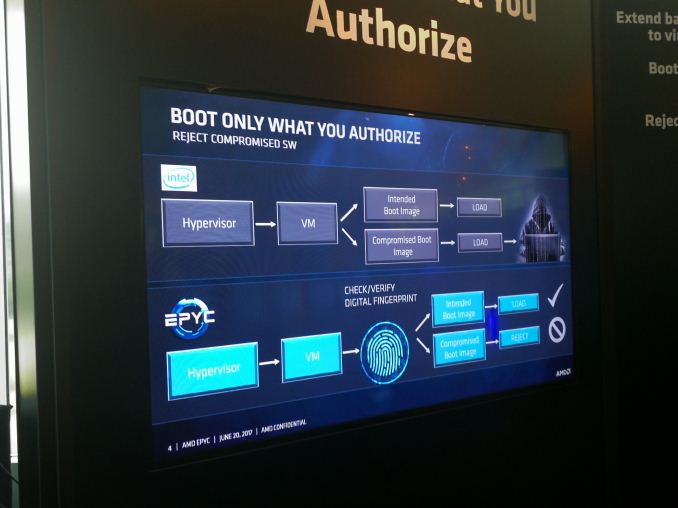AMD's Future in Servers: New 7000-Series CPUs Launched and EPYC Analysis
by Ian Cutress on June 20, 2017 4:00 PM EST- Posted in
- CPUs
- AMD
- Enterprise CPUs
- EPYC
- Whitehaven
- 1P
- 2P
AMD’s Reach and Ecosystem
As mentioned at the top of the piece, the big launch for AMD this year is the server platform. EPYC has an opportunity to reinvigorate AMD’s bottom line to the tune of several billion dollars a year, if they can get traction in the market. Depending on which Analyst you speak to, some are predicting anywhere from a 5% to a 25% gain in market share for AMD, into a ~$25B total addressable market. Given AMD’s worth, that would mean that the balance sheet in a few years might look as if 80% of it is provided by the server team.
As part of the launch today, AMD is announcing partners working with them to optimize the platform for various workloads. Sources say that this includes all the major cloud providers, as well as all the major OEMs. We saw several demo systems at the launch event with partners as well, such as HPE and Dell.

The variety of internal systems used by AMD for the demonstrations (some Dell/HP logos)

Using 8 VMs to compile the Linux Kernel in one go on AMD vs Intel 2P systems
Of course, the big question is if AMD is actually getting in significant orders for processors. Nothing is public on that yet, and we are told that they are likely to be nearer the end of the year. We are eagerly waiting to test the processors when our review systems arrive, and we will provide our performance breakdown soon.
























131 Comments
View All Comments
msroadkill612 - Wednesday, June 21, 2017 - link
Sounds a powerful feature for vid editors etc."Hot-swap NVMe/SAS3/SATA3
drive bays and M.2 slots"
Breit - Wednesday, June 21, 2017 - link
Really?: http://images.anandtech.com/galleries/5699/epyc_te..."All 2P E5 scores were derived from the following ICC compiler-based test results per spec.org, multiplied by 0.575 to convert them from the ICC compiler to GCC -O2 v6.1..."?!?
Not cool.
TC2 - Wednesday, June 21, 2017 - link
i smell a tragedy for amd with those "multiplications" :)HollyDOL - Wednesday, June 21, 2017 - link
Reminds me so called "Resultin's constant" joke...[Value you get] [any operator] [Resultin's constant] = [Value you wanted]
TC2 - Wednesday, June 21, 2017 - link
precisely!try another behavioural pattern: great claims, feeble results :)
to compare E5-2698 v4 20 cores with EPYC 7551 32 cores - 32/20 = 1.6, the extrapolation is claimed to be +44% or 1.44.
therefore 1.6/1.44=1.1(1).
now we can to conclude that for a 32 core xeon (it's easy for intel) the result will be +11% for intel, and no more advantage for amd at all!!!
such mathematical practices are ridiculous!
FreckledTrout - Wednesday, June 21, 2017 - link
Anyone buying these is going to want to see some large independent reviews / studies. Some of the larger companies looking at these say like Amazon's data center may get a few and do a study. I think that type of info is what everyone should wait on. These numbers look like they came from the marketing side of the house.Intel999 - Wednesday, June 21, 2017 - link
"Anyone buying these is going to want to see some large independent reviews / studies. Some of the larger companies looking at these say like Amazon's data center may get a few and do a study."Those companies that shared the stage with AMD for this presentation were included in the 5,000 Epyc chips that were given to OEMs/ODMs to test and validate over the last six months.
All the big boys know what EPYC is capable of and it seems that most are quite impressed.
Zizy - Wednesday, June 21, 2017 - link
Yeah well the story is that they obtained GCC 6.1 scores (by benching the CPU) for the top CPU and found out those are ~40% lower than the official ones. Some of that is ICC cheating on tests, some of that is optimization level.So, they reduced all official scores by the same ~40% for this comparison (with the top part being actually benched and achieved that result as on slides).
I can't fault them for using the middle ground GCC for those benchmarks, and the normalization step is reasonable enough as well. The only real issue here is use of -O2 instead of more optimized code. Sure, Ryzen/Epyc is new and GCC likely cannot optimize as good for it (which is probably they reason they used default O2), but this is not a valid excuse, should have used O3 at least if not advanced flags.
petteyg359 - Thursday, June 22, 2017 - link
Don't be a ricer. -O3 is often else than -O2 and EVERYBODY with a clue recommend against using it anywhere, ever.Zan Lynx - Monday, June 26, 2017 - link
Erm. I use GCC with -O3 in a library I build at my job. With profile feedback it is easily 20% faster than -O2. So I don't know where these "clue" people are. I've only been coding for 20 years or so. I may not have a clue yet.